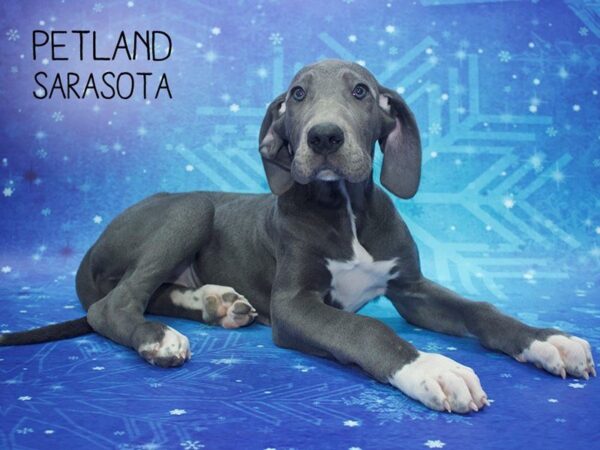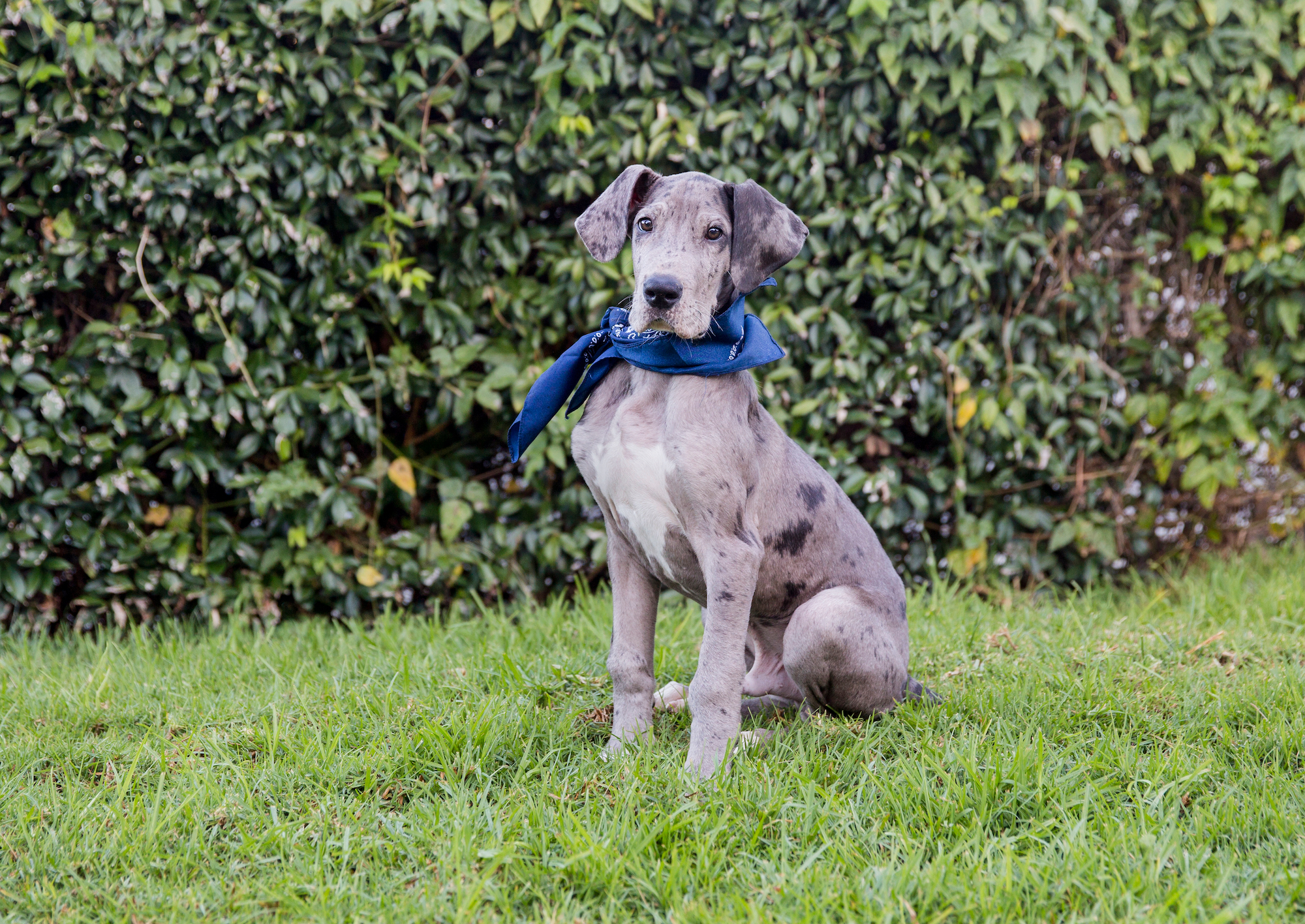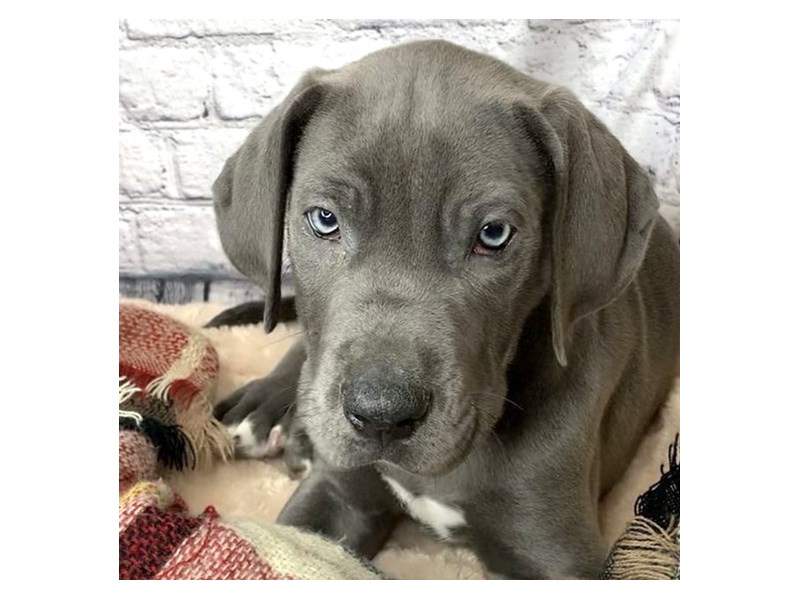
Overview of the Blue Puppy Great Dane
History and Origin of the Blue Great Dane
The Blue Great Dane boasts a fascinating history that intertwines with that of its more commonly recognized counterparts. Originating from Germany, Great Danes were originally bred to hunt wild boar, showcasing their majestic lineage. The blue variant emerged through selective breeding, where meticulous care helped highlight the rare silvery-blue coat.
- Historical Roots: Initially known as “Deutsche Dogge,” the breed transformed into a companion of nobility in the 18th century, shedding aggressive traits.
- Genetic Development: Breeding practices introduced the recessive gene responsible for the blue coloration, distinguishing these gentle giants further.
- Cultural Significance: Their regal presence has been celebrated in art and folklore, emphasizing their status as symbols of strength and elegance.
Characteristics and Appearance of Blue Great Dane Puppies
Blue Great Dane puppies enchant with their striking looks and gentle demeanor. As they grow, their silvery-blue coats glisten under sunlight, making them a visual delight.
- Size and Build: Even as puppies, they exhibit a robust frame, hinting at their future majestic stature of up to 32 inches at the shoulder.
- Temperament: These gentle souls are known for their affectionate nature, often bonding closely with family members.
- Physical Traits: Their smooth, short coat requires moderate grooming, and they are easy to maintain despite their size.
Overall, the Blue Great Dane is not just a stunning pet but a loyal companion, making them an ideal choice for families.
Caring for Your Blue Puppy Great Dane
Diet and Nutrition Requirements
Feeding your Blue Great Dane puppy the right diet is crucial for their growth and overall health. Given their impressive size, they need a balanced, high-quality diet tailored for large breeds to support their developing joints and muscles.
- Quality Ingredients: Look for dog food with real meat as the primary ingredient.
- Balanced Nutrients: Ensure the food contains Omega fatty acids for a healthy coat and sufficient protein for muscle development.
- Feeding Schedule: Divide their daily food intake into two to three meals to prevent overloading their stomach and reduce bloat risk, a common concern in large breeds.
As you embark on feeding your new pup, consult your veterinarian to determine the best diet tailored to their age and weight.
Exercise Needs and Activities for Blue Great Dane Puppies
Exercise is essential for your Blue Great Dane puppy’s health and happiness. While they aren’t overly energetic compared to other breeds, they do require regular activity to stay fit.
- Daily Walks: Aim for at least 30-60 minutes of exercise each day to help burn off energy.
- Playtime: Engage in interactive play using toys to stimulate their mind and body.
- Gentle Hiking: As outdoor enthusiasts, consider incorporating gentle hikes as they grow older, allowing your dog to explore different terrains once they’re fully developed.
Keep in mind that moderation is essential. Avoid high-impact activities until they reach maturity to protect their joints.
Health Concerns and Common Issues
Caring for a Blue Great Dane involves being aware of specific health concerns associated with their size. Common issues include:
- Bloat: Gastrointestinal dilation-volvulus (GDV) is a serious concern; learn the signs and be cautious around feeding times.
- Hip Dysplasia: This hereditary condition affects large breeds, so ensure they have a balanced diet and regular vet check-ups to monitor their growth.
- Heart Conditions: Great Danes can be prone to cardiomyopathy, requiring regular heart health screenings.
Regular veterinary visits are vital to catch potential issues early and keep your beloved Blue Great Dane in great shape.

Training and Socialization of Blue Great Dane Puppies
Basic Training Tips for Blue Puppy Great Danes
Training your Blue Great Dane puppy is a rewarding journey that sets the foundation for a well-behaved adult dog. Start early, ideally when they’re between 8 to 16 weeks old, to take advantage of their impressionable nature.
- Positive Reinforcement: Use treats, praise, and affection to encourage desired behaviors.
- Set Basic Commands: Focus on essential commands like “Sit,” “Stay,” and “Come.” Remember, consistency is key!
- Practice Patience: Training can be a gradual process, often taking several weeks or even months to perfect.
Incorporate training into daily routines, allowing opportunities for practice during walks or playtime—this makes learning fun and engaging for your puppy.
Socializing Your Blue Dane with Other Pets and People
Socialization is crucial for your Blue Great Dane’s development. Expose them to a variety of experiences and environments:
- Early Exposure: Introduce your puppy to different people, animals, and settings to build confidence.
- Enrol in Classes: Puppy training classes not only teach obedience but also provide a safe space for social interaction with other dogs.
- Gentle Introductions: Supervise meetings with other pets, as their size can be intimidating. Ensure positive experiences to build good behavior.
Behavior Management and Obedience Training
Managing a Blue Great Dane’s behavior involves consistent and ongoing training:
- Basic Commands Reinforcement: As they mature from 9 months to 2 years, focus on reinforcing basic commands for safety and control.
- Interactive Games: Use engaging toys to stimulate their minds and keep destructive behavior at bay.
- Stay Calm: Large breeds require calm leadership—avoid harsh methods, as they can lead to anxiety or fear.
By employing these strategies, you nurture a loving, well-mannered companion that thrives in various social situations, making your bond even stronger!

Blue Great Dane Puppy Breed Standards and Variations
Recognized Coat Colors and Patterns
The Blue Great Dane is celebrated for its striking appearance, particularly its unique coat color. Here are a few recognized variations:
- Silvery-Blue: This is the hallmark of the breed, with shades ranging from a light steel blue to a deeper charcoal blue.
- Other Colors: While blue is vibrant, Great Danes can also exhibit coats in fawn, brindle, harlequin, and black. Each color has its own unique allure.
That said, the beauty of the Blue Great Dane lies not just in its hue but in the even distribution of color across its well-groomed, short coat.
Size and Growth Development of Blue Great Dane Puppies
Blue Great Danes grow rapidly, transitioning from adorable pups to impressive giants:
- Growth Period: They reach their full height around 18 months to 2 years.
- Size: Males typically stand between 30 to 32 inches tall, while females range from 28 to 30 inches at the shoulder.
During the growth phase, it’s essential to provide proper nutrition and care to promote strong joints and bones—something that will support them throughout their remarkable lives.
Temperament and Personality Traits of the Blue Dane
The temperament of the Blue Great Dane is perhaps one of its most appealing traits. These gentle giants are known for being:
- Affectionate: Blue Danes are incredibly friendly and thrive on human interaction.
- Calm and Patient: Despite their impressive size, they carry a serene demeanor, making them loving companions for families and children.
- Intelligent: They respond well to training, benefiting from positive reinforcement methods.
In essence, the Blue Great Dane is a perfect blend of majesty and gentleness, making them cherished family members in countless homes. Their ability to attune to their human companions adds a special layer to their already distinctive character!
Finding and Selecting Your Blue Great Dane Puppy
Researching Reputable Breeders
Finding a Blue Great Dane puppy is an exciting journey, but it starts with choosing a reputable breeder. Not all breeders are created equal, so it’s essential to do your homework:
- Look for Credentials: Seek breeders registered with recognized organizations like the AKC. They often adhere to best practices in breeding.
- Ask About Health Testing: Responsible breeders will conduct health screenings on their breeding dogs to prevent genetic issues.
- Visit the Facility: If possible, visit the breeding site to observe the conditions in which the puppies are raised.
Remember, a good breeder is happy to answer questions and provide transparency about their practices!
Evaluating a Blue Great Dane Puppy’s Health and Background
Before committing to a puppy, evaluate its health and background:
- Health Records: Request the puppy’s health history, including vaccinations and vet visits.
- Meeting the Parents: Observe your puppy’s parents to gauge temperament and health conditions, as they contribute significantly to the puppy’s behavior.
This insight helps you ensure you’re bringing home a healthy and well-adjusted companion.
Bringing Your Blue Great Dane Puppy Home
Once you’ve selected your Blue Great Dane, it’s time to prepare for their arrival!
- Puppy-Proof Your Space: Secure areas that may present hazards and create a cozy spot for your puppy.
- Gather Supplies: Ensure you have a suitable crate, food, water bowls, and toys ready to welcome them.
Your new buddy will need a little time to adjust, so be patient and shower them with love as they settle into their new home. This foundation will set the stage for a lasting and fulfilling relationship!

Blue Great Dane Puppy Care and Maintenance
Grooming and Bathing Guidelines
Taking care of your Blue Great Dane’s grooming needs is essential due to their stunning coat and size. Thankfully, their grooming is relatively straightforward:
- Regular Brushing: Aim for weekly brushing to remove loose hair and bring out their coat’s natural shine. Use a soft-bristle brush or grooming glove for a gentle touch.
- Bathing: Bath your Blue Dane only as needed, ideally every 4 to 6 weeks, to prevent stripping essential oils from their skin. Choose a mild dog shampoo to maintain their coat’s health.
Trust me, grooming time can turn into a special bonding moment—your dog will love the attention!
Dental Care Tips for Blue Puppy Great Danes
Dental care is crucial for Blue Great Danes to prevent gum disease and maintain their overall health:
- Regular Brushing: Aim to brush their teeth 2 to 3 times a week using dog-specific toothpaste.
- Dental Chews: Incorporate dental chews into their routine, which can help reduce plaque buildup while satisfying their chewing instinct.
Establishing these habits early on will set your Dane up for a healthier life!
Preventative Measures and Veterinary Check-Ups
To keep your Blue Great Dane thriving, regular veterinary care is essential:
- Routine Check-Ups: Schedule veterinary visits at least once a year for vaccinations and health assessments.
- Health Observations: Keep an eye out for any behavioral or physical changes—early detection can make a big difference!
Being proactive with your pup’s health will ensure you enjoy many happy years together, creating memories that last a lifetime.
Blue Great Dane Puppy Training Challenges and Solutions
Addressing Behavioral Issues in Blue Dane Puppies
Training a Blue Great Dane puppy comes with its share of unique challenges, especially due to their size and strength. One common issue is jumping, as their enthusiasm can be overwhelming:
- Redirect Attention: If they jump up, encourage them to sit instead. Reward them for staying calm when greeting people.
- Consistent Commands: Use the same command consistently, like “off” or “sit,” to build clear expectations.
As with any puppy, addressing these behaviors early prevents them from becoming ingrained habits.
Advanced Training Techniques for Blue Puppy Great Danes
As your Blue Great Dane matures, you might want to introduce more advanced training:
- Agility Exercises: Setting up simple obstacle courses can challenge their intelligence while providing physical exercise.
- Canine Good Citizen Test Preparation: This teaches them essential life skills and can strengthen the bond between you and your pup.
Engaging in these activities not only keeps your Dane’s mind sharp but also enriches their lives.
Positive Reinforcement and Effective Communication
Using positive reinforcement is crucial for training Blue Great Danes effectively. Here’s how to ensure it’s effective:
- Be Timely with Rewards: Whether it’s treats, praise, or playtime, make sure rewards are given immediately after desired behaviors.
- Use Clear Signals: Maintain consistent verbal and physical cues. This helps your pup understand what’s expected of them.
This approach turns training sessions into enjoyable experiences, reinforcing trust and solidifying your relationship with your gentle giant.

Blue Great Dane Puppy FAQs and Additional Resources
Frequently Asked Questions about Blue Great Danes
Navigating the journey of becoming a Blue Great Dane owner comes with many questions. Here are some frequently asked ones to help you:
- What makes the Blue Great Dane’s coat unique? The beautiful blue coat results from a specific genetic mutation, giving them that stunning silvery-blue hue.
- Are Blue Great Danes good with kids? Yes, they are known for their gentle and friendly nature, making them excellent family companions.
- How much exercise do they need? Blue Great Danes benefit from moderate exercise, including daily walks of at least 30 minutes.
- What are common health issues for Blue Great Danes? They can be prone to conditions like hip dysplasia, bloat, and heart problems, so regular vet check-ups are crucial.
By answering these questions, you’ll feel more prepared for your new companion!
Online Communities and Resources for Blue Dane Owners
Connecting with fellow Blue Great Dane owners can be invaluable. Consider joining:
- Facebook Groups: Search for groups dedicated to Great Dane enthusiasts where members share tips and experiences.
- Forums: Websites like Great Dane-specific forums allow discussions about care, training, and health.
- Local Clubs: Check for local Great Dane clubs in your area for meet-ups and socialization opportunities.
With these resources, you’ll have a robust support network to help you enjoy every moment with your new pup!

Leave a Reply